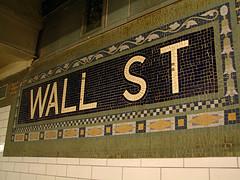If you ask a friend, neighbor or family member how the stock market has performed over the last 100 years, they’ll all probably give you a similar answer.
“Oh, you know, it’s averaged about 10%.”
While this number is fairly accurate on the surface, it hardly paints the full picture of what kind of future returns an investor can expect. Investors are not entirely oblivious, however, as most understand that the stock market is a volatile place and expect the ride to be more like the middle of a roller-coaster (being swung all around) rather than the smooth ascent at the beginning. But, there is still a misconception that, if one stays the course through the ups and downs, an “average return” will ultimately be achieved.
The problem with this idea is that…
Average Returns are an Illusion
Example 1 (simple illustration):
Let’s say that you have an investment that goes down 50% the first year and up 75% the second year. The “average return” of the 2 years is a positive 12.5%.
(-50 + 75) / 2
That’s simple math, right?
So, if I put in $100 in the first year, I would reasonably expect to have $126.56 after 2 years (even factoring the crazy volatility). However, in all actuality, if I put in $100 in the first year, I would have only ended up with $87.50 after the 2nd year.
Example 2 (real world illustration):
Take a look at these annual returns of the S&P 500 from 1928 to 1941:
| 43.81% | 1928 |
| -8.30% | 1929 |
| -25.12% | 1930 |
| -43.84% | 1931 |
| -8.64% | 1932 |
| 49.98% | 1933 |
| -1.19% | 1934 |
| 46.74% | 1935 |
| 31.94% | 1936 |
| -35.34% | 1937 |
| 29.28% | 1938 |
| -1.10% | 1939 |
| -10.67% | 1940 |
| -12.77% | 1941 |
The average annual return over this time period was 3.91%. So, a reasonable investor could have invested $100 in 1928 and expected this $100 to grow by 3.91% each year. However, in reality, $100 invested in 1928 would have been reduced to $93.66 in 1941.
Maybe this discrepancy seems insignificant when using small figures, but what if we’re talking about $1,000,000 and someone’s ability to retire or not? That misconception could be the difference of hundreds of thousands of dollars.
Why does this happen?
Think about it:
If I lose 50% in one year, how much do I have to earn the next year to get back to zero? The correct answer is not 50%, it’s 100%! I would have to double my money just to get back to where I started.
The error arises because simple averages are calculated assuming that results are independent of one another. What makes investing so lucrative, though, is how results from each year are compounded. And, trust me, investment companies that are trying to sell volatile investments fully understand the misinformation they’re presenting. So, what you’ll have to do to combat this misleading marketing is look for (or compute) geometric averages, annualized returns or a compound annual growth rate in place of arithmetic averages.
For those readers that enjoy math and want to know how to calculate geometric averages, you’ll find this to be a helpful calculator.
For those readers that just want to know how this affects you, here are 5 things to keep in mind:
- The average annual return of the S&P 500 between 1928-1914 has been 11.53%. The geometric average (the one that matters) has been 9.60%. A big difference over time, but still not too shabby.
- Keep in mind that most of these calculations only look at the overall price appreciation and do not account for dividends being reinvested. According to DQYDJ.net, “Since 1950, roughly 89% of your gains would have come from reinvesting your dividends.”
- Don’t trust everything you read (this obviously applies to everything but this blog).
- Don’t be afraid of math. Only be afraid of math that people calculate for you.
- Don’t lose money.
(photo credit: Michael Daddino)
